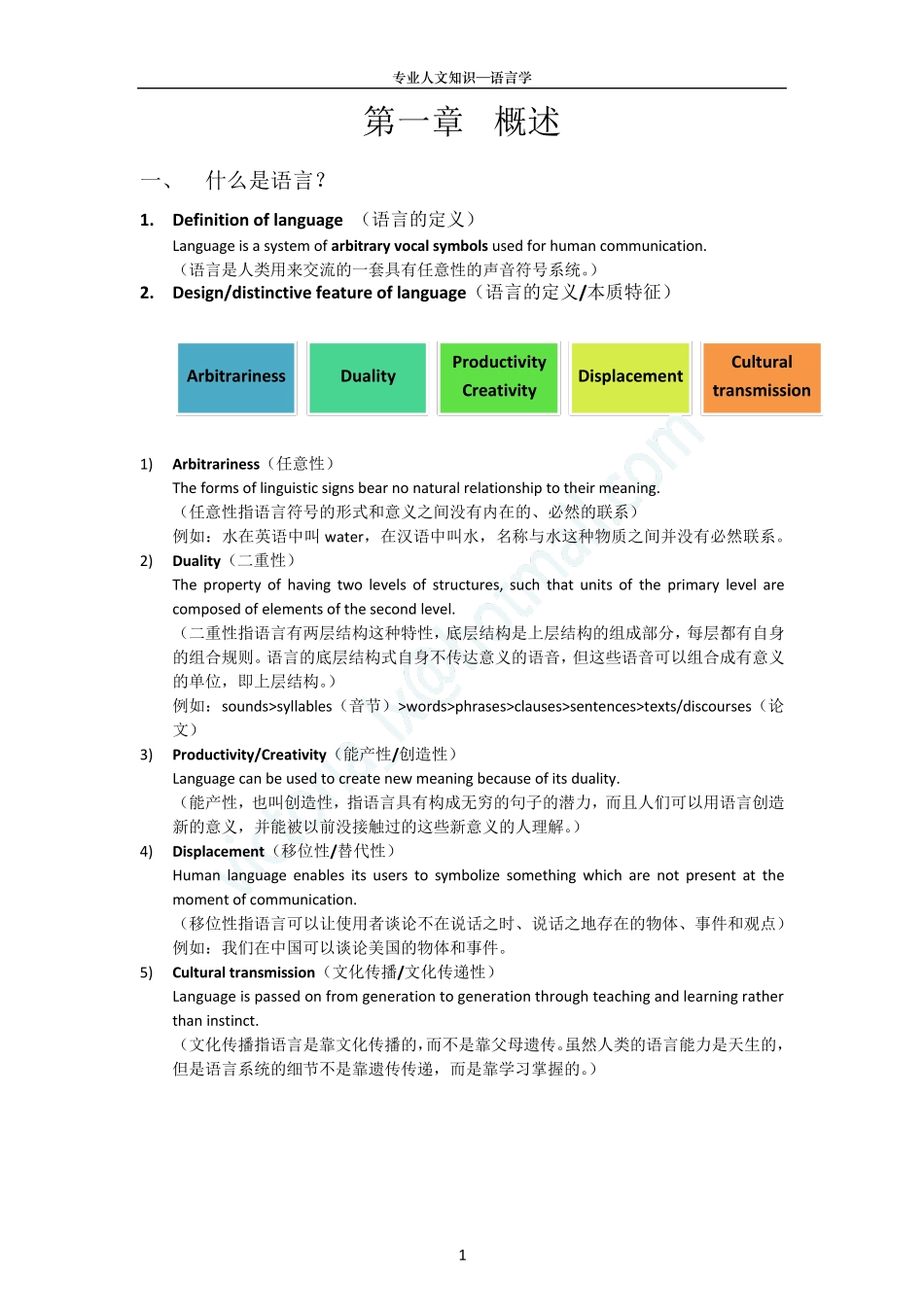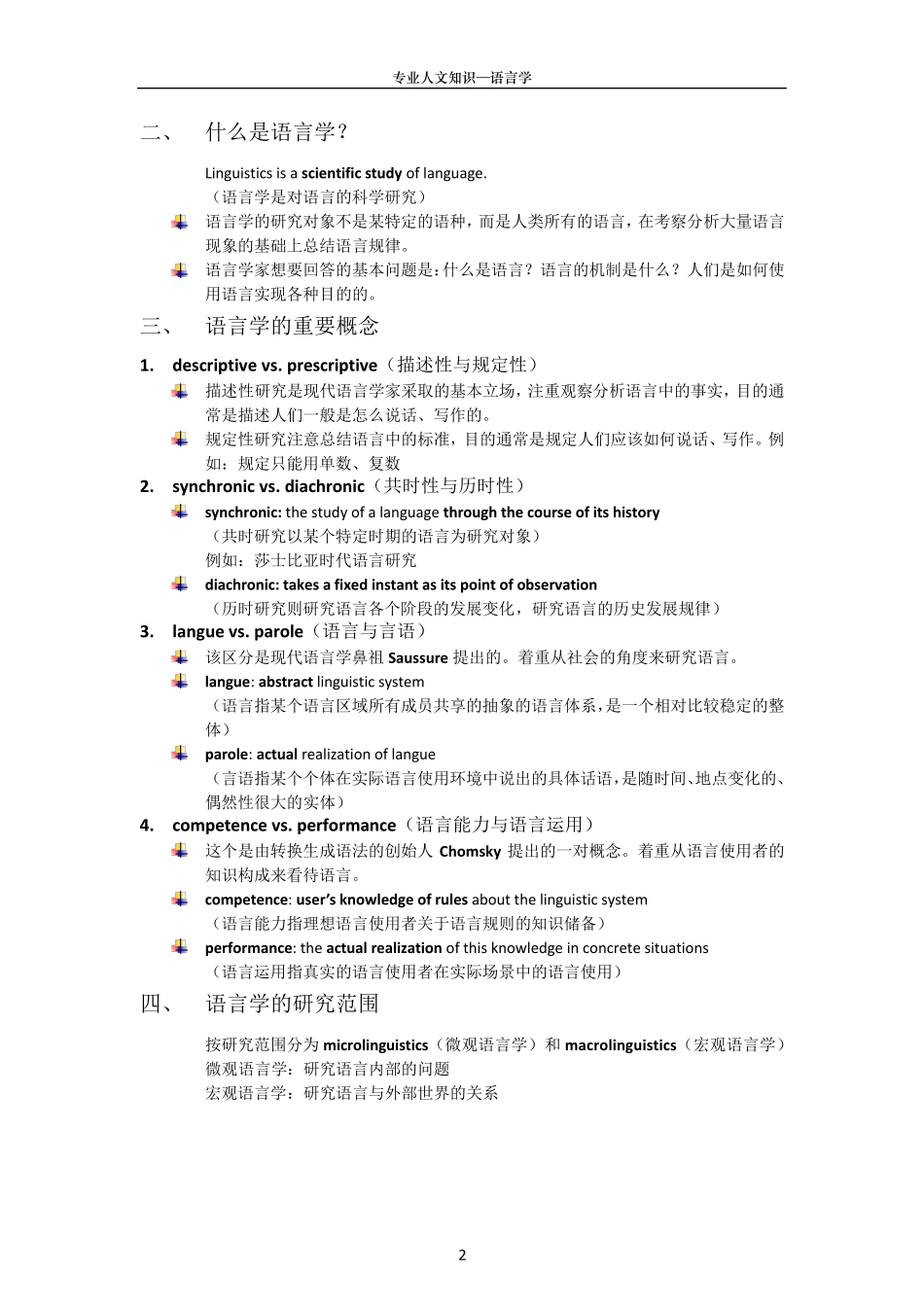专 业 人 文 知 识 — 语 言 学 1 第一章 概述 一、 什么是语言? 1. Definition of language (语言的定义) Language is a system of arbitrary vocal symbols used for human communication. (语言是人类用来交流的一套具有任意性的声音符号系统。) 2. Design/distinctive feature of language(语言的定义/本质特征) 1) Arbitrariness(任意性) The forms of linguistic signs bear no natural relationship to their meaning. (任意性指语言符号的形式和意义之间没有内在的、必然的联系) 例如:水在英语中叫 water,在汉语中叫水,名称与水这种物质之间并没有必然联系。 2) Duality(二重性) The property of having two levels of structures, such that units of the primary level are composed of elements of the second level. (二重性指语言有两层结构这种特性,底层结构是上层结构的组成部分,每层都有自身的组合规则。语言的底层结构式自身不传达意义的语音,但这些语音可以组合成有意义的单位,即上层结构。) 例如:sounds>syllables(音节)>words>phrases>clauses>sentences>texts/discourses(论文) 3) Productivity/Creativity(能产性/创造性) Language can be used to create new meaning because of its duality. (能产性,也叫创造性,指语言具有构成无穷的句子的潜力,而且人们可以用语言创造新的意义,并能被以前没接触过的这些新意义的人理解。) 4) Displacement(移位性/替代性) Human language enables its users to symbolize something which are not present at the moment of communication. (移位性指语言可以让使用者谈论不在说话之时、说话之地存在的物体、事件和观点) 例如:我们在中国可以谈论美国的物体和事件。 5) Cultural transmission(文化传播/文化传递性) Language is passed on from generation to generation through teaching and learning rather than instinct. (文化传播指语言是靠文化传播的,而不是靠父母遗传。虽然人类的语言能力是天生的,但是语言系统的细节不是靠遗传传递,而是靠学习掌握的。) Arbitrariness Duality Productivity Creativity Displacement Cultural transmission 专 业 人 文 知 识 —...


